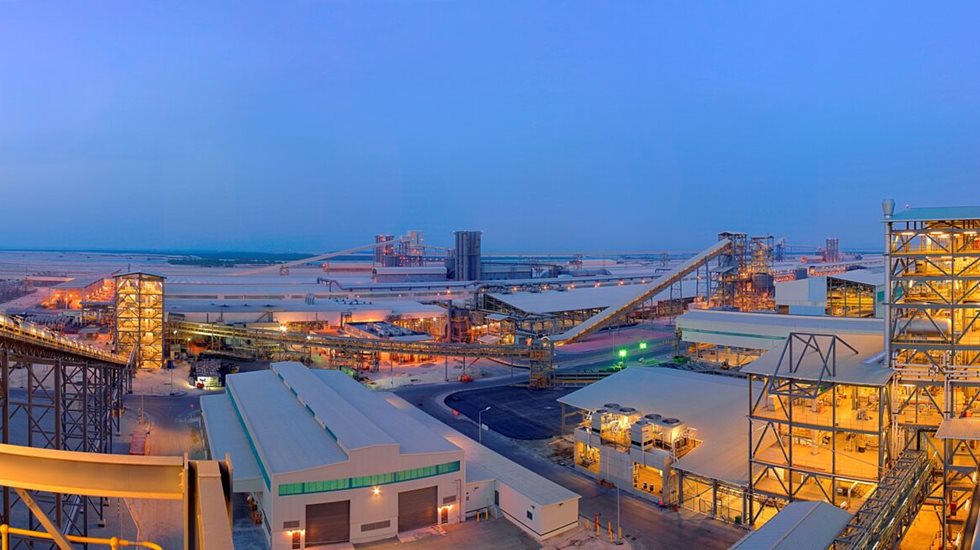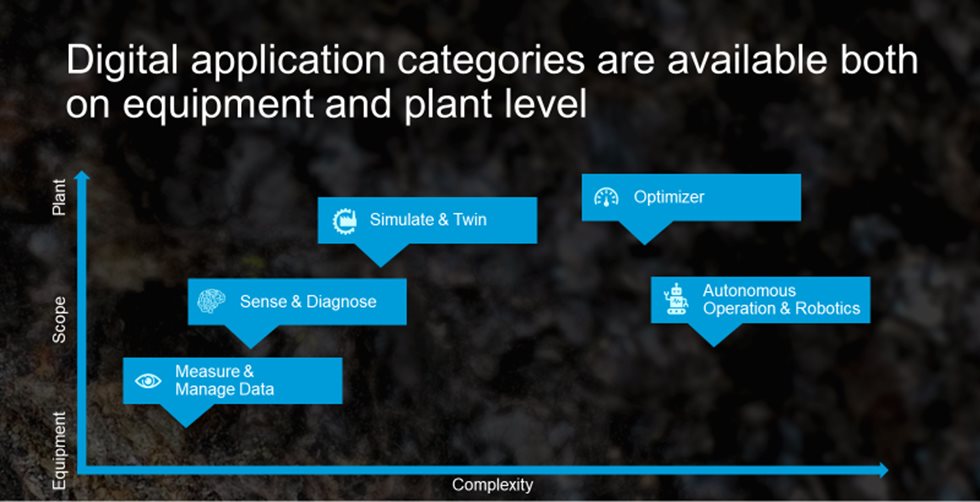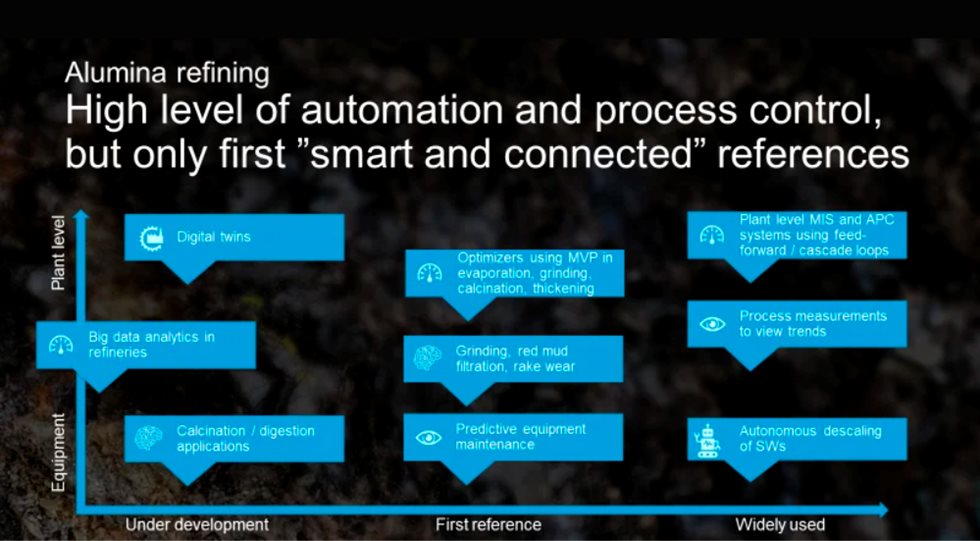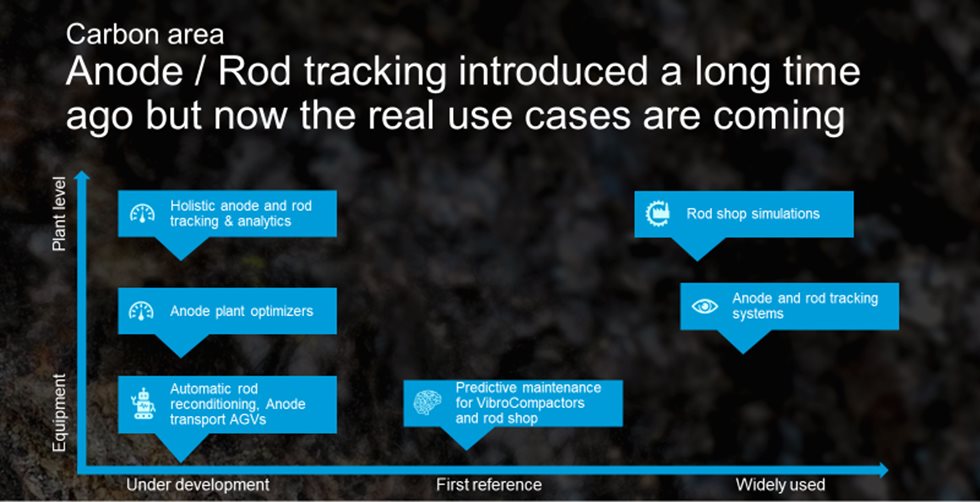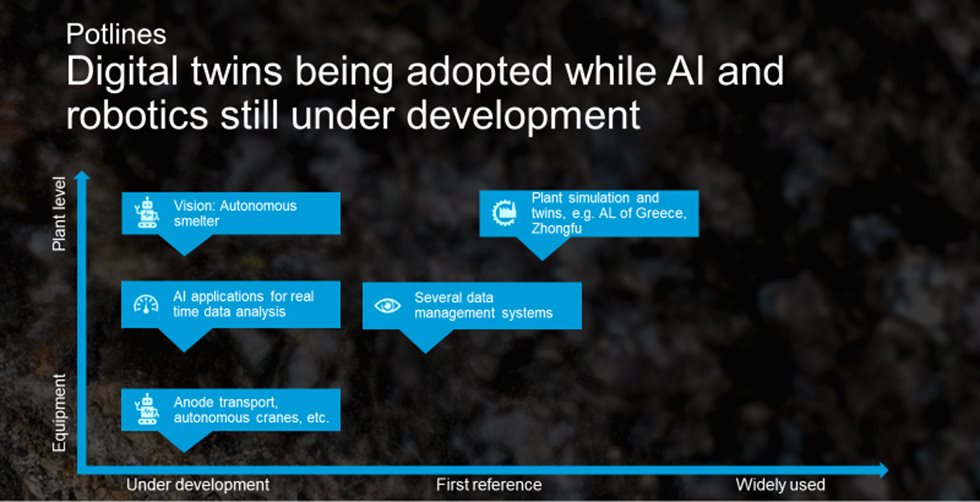There are many buzzwords out there when it comes to digitalization – Industry 4.0, Advanced process control, Big data etc. The reality is that the definitions of these terms are not always clear-cut, and in complex process industries like alumina refining and aluminium smelting, automation and digitalization can sometimes get muddled. Therefore, it’s important we have a clear definition of what the practical applications really are.
At Outotec, we have developed a simple five-stage framework for applications in complex process industries that serves as a testament of our maturity in different stages of the value chain:
1) Measuring and managing data: Systems including both hardware and software for analyzing, sensing and monitoring processes, as well as equipment visualizing measurement results without analyzing them at least in the advanced fashion.
2) Sensing and diagnosing: Software solutions and systems that draw data from assets and processes, which provide analytics and visualization of asset availability, performance and condition for asset maintenance and performance management.
3) Simulating and creating a “twin”: Stand-alone systems that support decision making and learning by exploring process and equipment behavior and testing different scenarios.
4) Optimization: Applications that stabilize, advise and optimize by connecting to process control and equipment, having an algorithm and actionable suggestions to adjust process control parameters manually or in closed loop in order to improve efficiency, performance and availability while reducing costs.
5) Robotics and autonomous operation: Systems and equipment that can autonomously operate based on sensing and gathering information dynamically.
It’s important to note that while the scale is not linear, 1-5 do represent a scale of complexity and can each exist either at the plant level, or at the individual equipment level.
